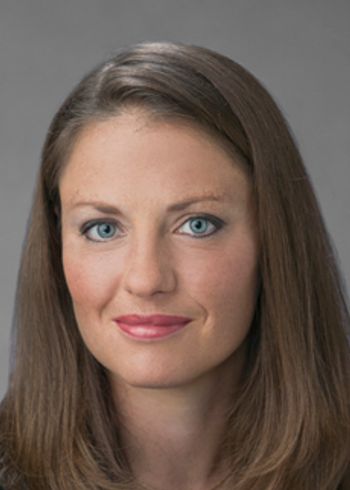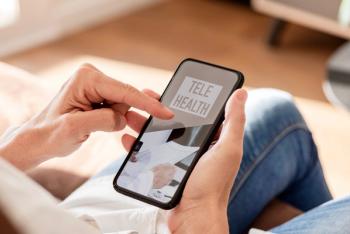
Twelve Mobile Apps for Your Medical Practice
Got a problem at your practice? There's an app for that. Here's a closer look at some of the best.
When interventional cardiologist Jordan Safirstein began his career 14 years ago, looking up information - everything from drug-drug interactions to patient medical history - took twice as long as it does today.
"Your white coat pockets had to be big enough to carry the reference [book], and your reference had to be small enough to carry in your white coat," recalls Safirstein, a self-described "i-everything" enthusiast who practices at New Jersey Cardiology Consultants of North Morris, N.J.
While there are dozens of medical-reference apps on the market, he credits
As physicians like Safirstein are discovering, there's a breed of applications like this one that are designed for use on smartphones and tablets that are helping doctors run their practices, treat patients, and even improve their bottom line.
Here are eight other apps for smartphones and mobile tablets - ones newly released or given a major overhaul in the last 12 months, plus one that will be released soon - that are helping solve practice challenges.
Challenge: Staying Current
Solution: Information Apps
For allergist and immunologist Melinda Rathkopf of Anchorage-based Allergy, Asthma and Immunology Center of Alaska, staying current on her specialty is critical. Still, some months the assistant clinical professor at the University of Washington, doesn't have time to even take the plastic wrapper off some of the medical journals that pile up on her desk. But her new favorite app -
"It's a great way to organize and browse all those medical journals we try to keep up on," says Rathkopf.
For Android users, as well as iOS-device devotees, the
Challenge: Helping Patients Quickly
Solution: Clinical Reference Apps
There are hundreds of clinical reference apps available. But what makes the recently updated
"It offers a better feel for some of the same features offered by other apps," says Fox. "And it puts it all in one, easy-to-use place."
Fox recalls a recent visit with a patient who had Samter’s syndrome, something Fox had never heard of. Fox was able to, through a series of tap commands, use the Medscape app to easily pull up information on the condition and learn everything about it in moments.
Another time, when a patient couldn't give him any specific information on the "yellow and white pill" she took for a stomach condition, he found a picture of the pill via the app's drug-reference feature and verified it with the patient.
The app also features 129 medical calculators, as well as a complete list of more than 1,800 insurance plans across all 50 states, so physicians can bookmark health plans that they participate with and have access to the tier status of a particular drug, compare the tier status for drugs in the same class, and know which drugs are covered and least expensive for patients based on their insurance.
Another recent and notable app is
Challenge:Patient Communication
Solution:Patient Education Apps
The release of the iPad about three years ago prompted the development of hundreds of new patient-education apps for physicians to use in the clinical setting. Ever since, patient education has been forever changed for the physicians who rely on these apps.
When internal medicine physician David Johnson, of Gaston Medical Group in Gastonia, N.C., needs to explain something to patients, he no longer relies on his amateur illustration skills. Instead, he uses a slew of visual apps to show patients what they need to know, and educate them about their conditions.
One of his favorites:
Rathkopf also likes visual patient-education apps, and uses a bunch of them. "There's a new one that's just an iPad app called
Challenge: Coordinating Care
Solution: Care Coordination Apps
As patients become more digitally oriented and expect physicians to exchange data, providers will want to take a closer look at apps that allow them to coordinate care. The latest version of the
Challenge: Getting Paid
Solution: Mobile Payment Apps
One of the most common practice billing complaints is unpaid claims. And while patient portals and automatic payment technology software are making it easier to collect, adding the convenience of mobile payments makes sense for today's patient, who is increasingly used to paying by smartphone. According to a March report by Juniper Research, mobile payments are projected to reach $302 billion by 2014, and by 2017, nearly one in five mobile transactions will be done over media tablets.
One of the more promising new apps in this category is Money2 for Health by Citi and Aetna. The app, which will soon roll out in select markets for Windows, Android, BlackBerry, and iOS users, allows consumers to see their payments to providers and healthcare information all in one place, and to pay from any bank account. All patients and practices have to do is enroll. The initial launch of this app is only for Aetna patients, but it will be available to other health plans and the patients they serve in coming months.
"The problem that this is solving is the current systems are broken when it comes to patient payments," says June Felix, managing director, global healthcare solutions, for Citi Enterprise payments. "It's going to allow consumers to see their patient payments [owed to] providers and healthcare information all in one place, and to pay from any bank account."
Marisa Torrieri is an associate editor at Physicians Practice. She can be reached at marisa.torrieri@ubm.com.
This article originally appeared in the June 2013 issue of Physicians Practice.
Newsletter
Optimize your practice with the Physicians Practice newsletter, offering management pearls, leadership tips, and business strategies tailored for practice administrators and physicians of any specialty.











